Showing 205–216 of 247 results
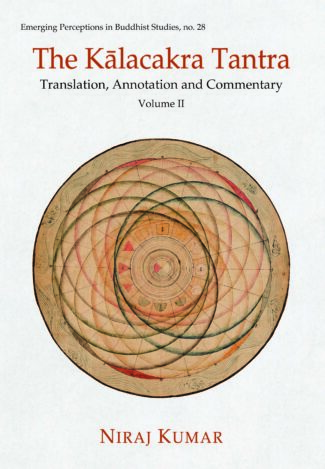
Proposed in five volumes, this volume of Kālacakra Tantra is the second in series. While the first volume attempts to locate mysterious Śambhala and Oḍḍiyāna while delving into the chronology of legendary Kalkī kings, the second volume deals with the structure of inner Kālacakra. It explores the internal mechanisms of winds, subtle veins and cakras. Haṭha-yoga and tenets of Islamic philosophy are also covered in the second volume.
“The Kālacakra Tantra was the last major Tāntric text composed before the decline of Buddhism in India. Over the course of its thousand-year journey, the book has left an indelible influence over different regions of Asia. Apart from the Vimalaprabhā commentary composed during the mid-eleventh century, no verse-by-verse commentary is available to the general reader. Kumar has translated the entire 1,047 stanzas of the text written in Sragdharā metre. In addition, he has produced distinct volumes of fresh, in-depth commentary for each of the five chapters of the original Sanskrit text. The first volume was published in 2022.
This second volume delves into the understanding of the inner Kālacakra. The internal mechanisms of winds, subtle veins and cakras have been explored with clarity. In Indic tradition, haṭha-yoga has been propounded for the first time in this section of the Kālacakra Tantra. Likewise, it contains the first Indian critique of the tenets of Islamic philosophy. This volume also examines several methods to calibrate the biomechanics of prāṇa-vāyu to defer the impending death.”

The book addresses the main theme of the nature of consciousness from a wide-ranging stances and have also taken a step towards establishing a platform for an intense and critical study of Indian theories of consciousness
The book provides a platform to discuss and examine the subtle and complex issues related to the nature of consciousness, self, mental states and subjectivity from Indian and cross-cultural perspectives. It explores contemporary problems of consciousness and tries to find solutions from Indian philosophical traditions. The purpose is to understand how far the views and approaches of classical and contemporary Indian thinkers are relevant in contemporary consciousness studies. The book argues that great thinkers of Vedānta, Tantra, Sāṁkhya and Buddhism have done enormous works which can be explored, examined and enhanced even today for a better comprehension of the subjectivity and conscious experience.
The chapters of this present volume have thoroughly explored and examined many classical Indian theories of consciousness. Keeping in view the objectives of this volume, the contributors have made an effective effort to reflect critically on Indian theories to answer the contemporary problems. There are chapters discussing and examining the standpoints of Indian thinkers like Abhinavagupta, Utpala, Śaṅkara, Rāmānuja, Swāmī Vidyāraṇya, Nāgārjuna, Gautama and many more. On the other hand, there are chapters engaged in reappraising the philosophical positions of Kant, Hegel, Sartre, Chalmers, Searle, Dennett and other contemporary thinkers. The chapters of this volume have addressed the main theme from a wide-ranging stances and have also taken a step towards establishing a platform for an intense and critical study of Indian theories of consciousness.
The book is extremely beneficial for students and scholars interested in classical Indian philosophy and contemporary consciousness studies. It inspires more researchers to ponder upon the concept of consciousness and subjectivity from multiple dimensions.
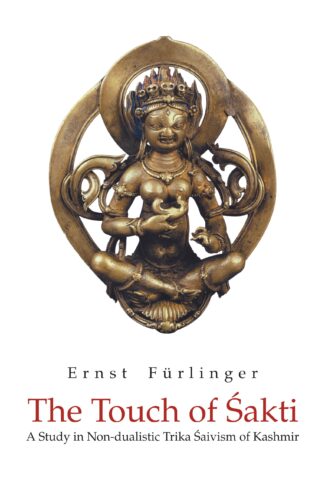
This volume presents an overview of the historical development of the Kashmirian Saiva traditions, especially of the non-dualistic system, Trika, and deals with the bodily experience of the transcendent power, the Sakti, in the context of the Saiva Kundalini-Yoga.
The Kashmirian Shaiva tradition in its non-dualistic form in particular is one of the richest philosophical traditions of India that have survived to the present day. This book by the noted scholar, Dr Furlinger, deals with the bodily experience of the transcendent power, the Shakti, in the context of the Shaiva Kundalini-Yoga. In an insightful introduction, the scholar presents an overview of the historical development of the Kashmirian Shaiva traditions, especially of the non-dualistic system, Trika, made famous by the work of its famous proponent, Abhinavagupta. He studies the theme of shaktisparsha in selected texts of non-dualistic Trika Shaivism of Kashmir, focusing on Utpaladeva’s Shivastotravali of the tenth century and Abhinavagupta’s Tantraloka of the eleventh century. The texts are analysed along with a noted commentary associated with each to shed light on the different contexts and meanings in which the word sparsha occurs in connection with Shakti, the divine power, revered as the Goddess. The study examines sparsa as one of the highest stages in the spiritual ascent in the Tantraloka and its corresponding description in the Shivastotravali. The difference in the notion of sparsa in the two texts is also brought out. It thus reveals the liberating and critical potential of the non-dualistic Shaiva tradition of Kashmir. The book will interest scholars and students of Indology associated with Indian religious-philosophical traditions.
The Ramayana has effected incessantly the Indian consciousness for more 2,500 years. Its moral and ethical impact and relevance are par excellence of its poetic beauty and dramatic narrative. It gave a new praxis to the dharmic mores of the Indian psyche. The Valmiki Ramayana as Epic and Dharmasastra: Reading the adikavya as an Ethical Guide is derived from a series of three lectures that Prof. Dr Robert Goldman delivered at the Department of Philosophy, Jadavpur University in 2016 as a visiting professor.
The book, while taking an overview of the Sanskrit epics as poetry, history and science, takes one through the dilemma that Dasaratha faces due to his denying kingdom to Rama and the latter’s going for vanavasa, the ethical and moral challenges that Rama faces in his war with Ravana and others, and in the ethical shift that Rama undergoes from his compassionate and self-sacrificing moral code to a more rigid dharmasastra and arthasastra-oriented mode of royal conduct in the last part of the epic. All this, looking back over the various situations, episodes and responses of the principal characters in the epic drama.
The Ramayana thus functions not only as as a grand kavya and an ithihasa, but also as a dharmasastra and a nitisastra as well.
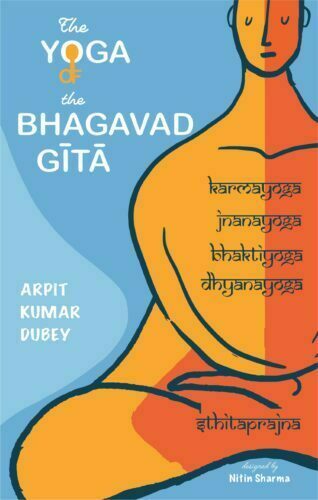
It vividly and graphically presents the key concepts of the Bhagavadgita while majorly discussing the concepts like atman, Paramatman, jagat, karma-yoga, jnana-yoga, bhakti-yoga, dhyana-yoga, sthitaprajna, sadhakas’ challenges and the ways out.
This volume covers all the aspects of Yoga and self-management discussed in the Bhagavadgita –– a comprehensive text of personal and professional life management and adhyatma-sadhana (spiritual upgradation). What makes the book special is its dialogue format between a guru and his disciple as exactly what we witness in the Bhagavadgita as between Sri Krsna and Arjuna.
It vividly and graphically presents the key concepts of the Bhagavadgita while majorly discussing the concepts like karma-yoga, jnana-yoga, bhakti-yoga, dhyana-yoga, sthitaprajna, and seven keys of self upgradation, which leads towards Health, Happiness and Harmony, challenges and the ways out.
This book will help in the making broader understanding of the concepts and philosophy of the Bhagavadgita, which transcends time and space, to register with the new generation readers and thereby emulate and practise the varied forms of Yoga.

This book, which highlights and engages one to the theory of karma that is in vogue from the Vedic times and reinforced by the Brahmasūtra and the Bhagavadgītā, talks about one’s karma-phala and supplies enough material on karma-adhikāratva, jīva-kartr̥tva and the divine intervention.
Creation is a process, where the potential insentient matter (prakr̥ti) gets manifested into the gross form, to embody during the sr̥ṣṭi, each of the sentient entities called the ātmas with the suitable body either of deva, manuṣya, jaṅgama or of sthāvara. This glorious activity is orchestrated by the one and only Omnipresent, Omnipotent and Omniscient Reality called Brahman. But one question remains still an enigma, as to why a particular sentient entity gets a specified body and through whose direction that decision arrives? The ancient Vedāntic knowledge reinforced by the Brahmasūtra and the Bhagavadgītā establishes that it is, purely and solidly, the result (karma-phala) of earlier actions (karmas) of each one of the sentient entities. This is a strong and formidable solution to the unanswered questions like why does, one child being blessed to be born in either rich or healthy and sāttvic family and another child being consigned to be born in a family living in poor conditions or unhealthy tāmasic environment.
This book would engage the readers to think on those lines by supplying enough material on karma-adhikāratva, jīva-kartr̥tva and Divine intervention.

The monograph consists of two parts, the first examines Buddhist devo-tional practices, in Theravada tradition and their objective and benefits. Part two elucidates the rise and growth of Buddhist devotionalism in Ceylon, Burma and Thailand, keeping view in the specific demonstrative aspects of their faith in contemporary Buddhist religious life.
The monograph consists of two parts, of which the first examines the Buddhist devotional practices, from the historical and canonical perspectives of the evolution of the worship of caitya, stupa, relics, symbols and images. It provides a multi-dimensional account of caitya, thupa, relic, symbol and image worship in Theravada Buddhist tradition, in the Sinhalese Vamsa literature and as depicted in the records of the prominent Chinese travellers to India. It throws light on the Buddhist stupa, the Buddhas relics viz, hair, nail, tooth and ashes; the symbols which pre-ceded the Buddha image viz., the bodhi-tree, wheel, bowl, staff, robe, crest, turban, shadow and the Buddhas foot-prints as the objects of devotion and worship and the objectives and benefits of such devotional acts. Part two elucidates the rise and growth of Buddhist devotionalism in Sri Lanka with special reference to its ceremonies, rituals, pilgrimages as depicted in the devotional literature of Ceylon. Further, it provides an account of devotional Buddhism in Burma by tracing its antiquity; describes Buddhas relics, images and pagodas as the objects of veneration. Similarly, it makes a brief survey of Thai Buddhist devotionalism with special reference to Wats, Thai offerings and prayers to Buddha images and their objectives. The work illuminates the historical and canonical significance of precept and practice of different aspects of Buddhist devotion and how they are demonstrated in the contemporary Buddhist religious life of Ceylon, Burma and Thailand.
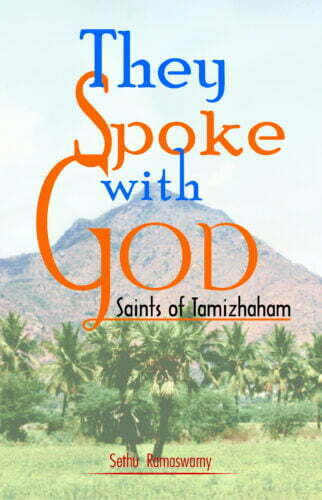
This book, which will interest general readers and scholars, and particularly addressed to young readers, highlights the lives and times of some of the saints of Tamil land who have been the votaries of peace, universal brotherhood and spirituality.
The lives and teachings of saints have a special place in Indian tradition. Saints have been the votaries of peace, universal brotherhood and spirituality and were, and are, among the most loved and revered personages in Indian history and culture. This volume comes as a tribute to the prominent saints of Tamizhaham or Tamil land, who have contributed immensely to Indian culture and society.
It highlights the lives and times of some of the noted exponents of the Shaivite path of devotion. It begins with discussions on some of the famous Nayanar saints like Somasimarar Nayanar and Karaikkal Ammaiyar, and takes up the contributions of medieval bhakti saints like Sridhara Venkateswara Ayyaval and Avudai Akkal. The concluding section deals with the ecstatic saints of the region of the late nineteenth and twentieth centuries. This part contains an account of a woman saint of our own times, Andavan Pichchai Amma, as well. The lives of the saints are told in a simple language that wonderfully unravels their complex messages. The work shows that though the saints had diverse experiences and expressed their spirituality in different ways, the lives of all these saints have an ecstatic and a celebratory quality about them.
The volume will interest general readers as well as scholars. It is particularly addressed to young readers in an effort to introduce them to Indian spiritual and cultural legacy.
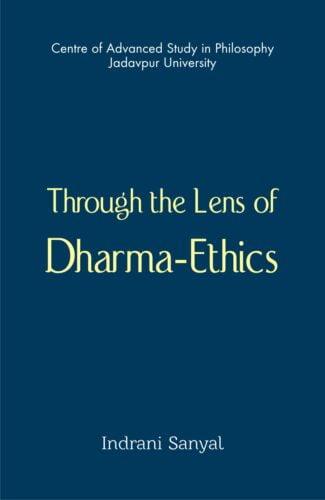
This volume primarily concerns itself with the elaboration and analysis of the Vaidika ethics as one of the exemplars of DharmaEthics, to answer the basic question as to why should one be moral. A sustained analysis has been carried out to explain the sense of transcendence of the empirically existent, in terms of abhyudaya, mukti for which this DharmaEthics is a supportive ladder.
Notwithstanding the profound and vast dimension of the concept of Dharma as such, Through the Lens of Dharma-Ethics, the author has endeavoured to put forward some of the metaphysical affirmations on which the feasibility of Dharma-Ethics as a discipline reposes. This volume primarily concerns itself with the elaboration and analysis of the Vaidika ethics as one of the exemplars of Dharma-Ethics, to answer the basic question as to why should one be moral.
An attempt has been made in this volume to rearrange and reformulate the answer by discussing the concepts of Dharma and its allied concepts, different kinds of karmas prescribed for the individuals, the fourfold scheme of purushartha, psychology of human volition, roles of different psychological traits, nature of motivational force conveyed through the imperative statements and many other relevant issues.
A sustained analysis has been carried out to explain the sense of transcendence of the empirically existent, in terms of abhyudaya, mukti for which this Dharma-Ethics is a supportive ladder. If there is hope for man, why should there not be hope for mankind? possibility of this sort has also been addressed. The human-centric Dharma-Ethics has been deciphered as a description and also as a prescription for the embodied humans with their various sort of indebtedness, about how they live and how they ought to live in the truth of Dharma.
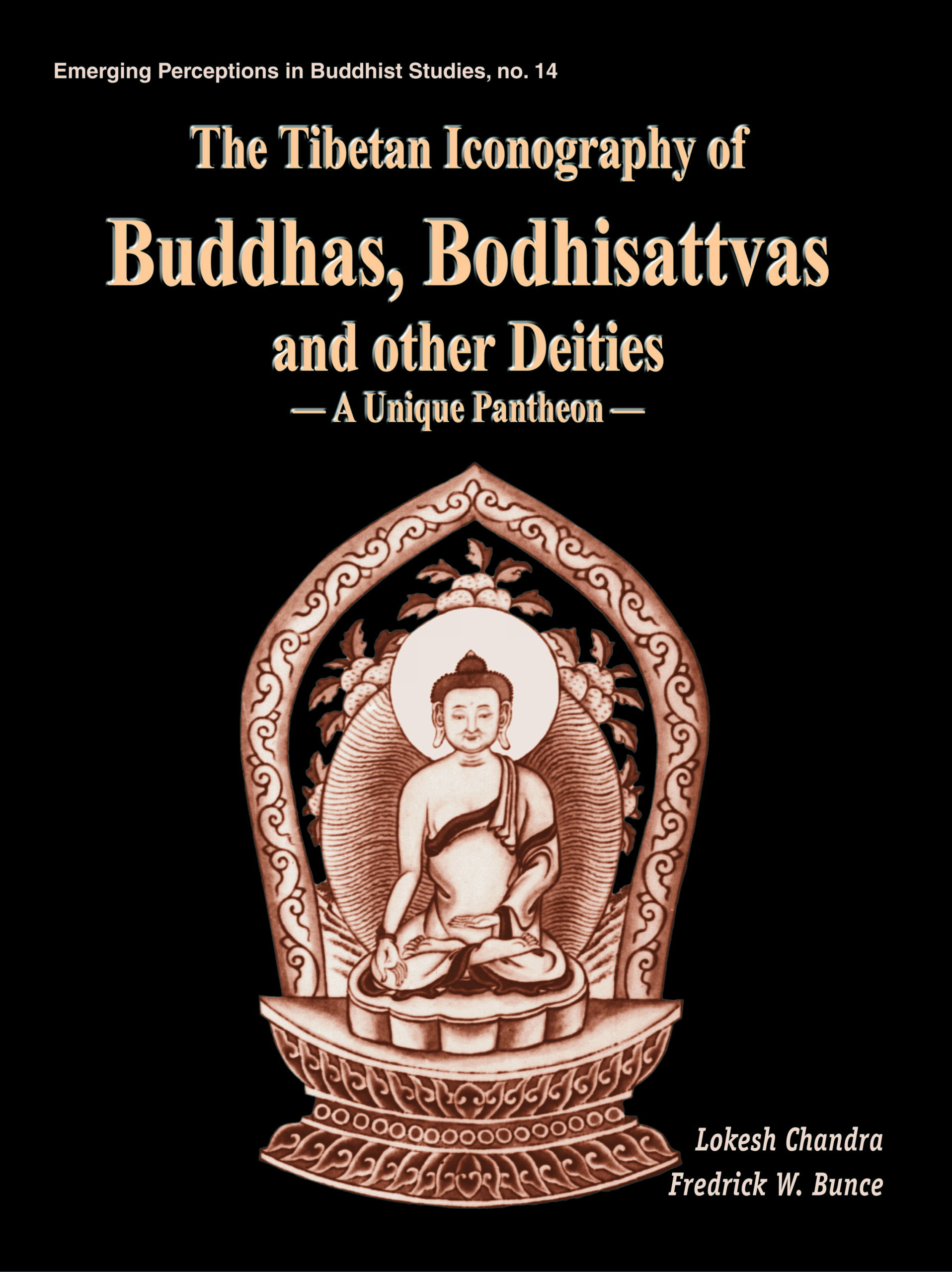
The book studies the 360 icons of the Chu Fo Pu-sa Sheng Hsiang Tsan pantheon referring to a rare set of woodcuts distinct among Buddhist pantheons. It analyses the unique features of this pantheon, pointing out the significance of each figure in the mythological/theological framework and minutely describing the iconography of the images.
Beginning with a few aniconic symbols, like footprints, the Bo tree or stupas, in the pre-christian Indian art, Buddhism, over the centuries, came to evolve a be-wildering array of deities in ever-increasing number of pantheons. Interestingly, in Buddhism today, there are perhaps as many pantheons as there are countries, or internal regions or sects within them. Chou Fo Pu-sa sheng Hsiang Tsan, in focus here, is one of these many Buddhist pantheons and acknowledgedly the culmination of Lamaist art. Authored by Rol. pahi.rdo.rje, alias Lalitavajra, (1717-1786): an imperial preceptor of Emperor Chien-lung (1736-1795), it is a rare set of 360 wood-cuts/xylographs, representing varying forms and manifestations of the Buddhas, Bodhisattvas, tantric and tutelary deities, arhats, sages, teachers, dharmapalas and protective divinities. It is also accompanied by 360 `eulogies’ in Chinese. Two internationally distinguished scholars here team up to present afresh the Chou Fo pu-sa Sheng Hsiang Tsan, aptly called a unique pantheon. Drawing together all the 360 wood-cut images in their vividly enlarged/enhanced versions without compromising their aesthetic integrity, the book not only captures their subtle iconic devices, but spells out as well, in meticulous detail, all their iconic attributes, like body postures, faces, arms/hands, mudras, asanas, vahanas, companions, and whether clam or wrathful. The book also incorporates the names of each deity/deity-form in Sanskrit, Manchu, Mongolian, Tibetan, and Chinese. Unveiling, for the first time, the images of a veritably unique pantheon, in their enlarged format, and their accompanying Chinese eulogies, the book is bound to fascinate anyone concerned with Buddhist art and iconography.

The volume studies comprehensively the theory and practice of Tibetan Buddhism: its historical, religious and cultural evolution, its various deities and their symbolism, its basic philosophy and sadhana and the intricacies of the religious experience it involves. It has numerous illustrations and references to original works.
Tibetan Buddhism has held a place of its own in the Buddhist tradition, having preserved and evolved the religious culture of the Vajrayana, the final phase of Buddhism in India. Within that, the Tibetan Tantric belief has a unique significance and it has made a memorable contribution to the literature on Tibetan Buddhism. This authoritative work deals with the theory and practice of Tibetan Buddhism in a comprehensive manner. It presents a study of Tibetan Tantricism beginning with an account of the historical, religious and cultural evolution of Tibetan Buddhism and delving into the intricacies of practice of the religion. Dr. Krishna Ghosh discusses the many deities of the tradition as representing a wide range of religious experience from the primitive to the sublime. She lays bare the complex vision of Tibetan Tantric Buddhist philosophy and sadhana, clearing it of the obscurantism associated with the belief system for long. The work abounds in illustrations line drawings and photographs and has numerous references to original works by Tibetan and other scholars. The book is written in an easy-accessible style to allow a broad range of readers to familiarise themselves with Tibetan Tantric Buddhism. Its penetrating insights into the subject would make it an invaluable work for scholars and practitioners of the tradition.
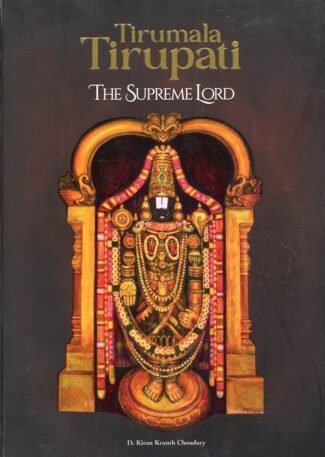
“Tirumala Tirupati” is a captivating coffee table book with over 200 visuals exploring Lord Venkatesa’s divine identity, temple history, architectural insights, and legends of Tirumala. A treasure trove for devotees, it beautifully unveils traditions, rituals, and spiritual significance.
The Supreme Lord is a unique coffee table book with over 200 photographs, graphics, paintings, and architectural ideas. For the first time, it confronts Lord Venkatesa’s idol identification and offers viable answers. This emphasises the necessity of calling the Sri Venkatesvara temple Svayamvyaktakshetram and the Lord inside Yajna Vishnu. Dasavataras of Vishnu, how the Lord reached Seshachala hill, Kaliyuga Pratyaksha daivam, legends, and Srinivasa kalyanam with Padmavati are discussed. The Seven Hills were important in Seshachala when there were several hill ranges, and their significance is linked to the Mahavedi. Exclusive temple history, inscriptions, and architectural representations and their significance are offered. The Supreme Lord’s physiognomy and why He looks so peaceful are described. For devotees, the hundi (koppera) and its shape, the sacrificial vedi, the reasons for the vast collection of quantities, and the construction of garbhagriha according to Mahavedi’s measurements are described. Adi Varaha, Goddess Padmavati, Bhaktas, and rulers are highlighted for their contributions to the temple’s growth in all sectors. Pictures of Tirumala festivals, prasadams, thirthas, and locations around Tirupati are lovely and alive. This volume would be a wonderful treasure trove for all Sri Venkatesvara followers.
| × |
|
Art of Tabla-Rhythm 1 x ₹495.00 |
| × |
|
Sapiens and Sthitaprajna 1 x ₹720.00 |
| × |
|
Birds and Animals in Mughal Miniature Paintings 1 x ₹1,440.00 |
| × |
|
Mysticism in Shaivism and Christianity 1 x ₹1,125.00 |
| × |
|
Science and Spirituality 1 x ₹900.00 |
| × |
|
Buddhist Art in India and Sri Lanka 1 x ₹900.00 |